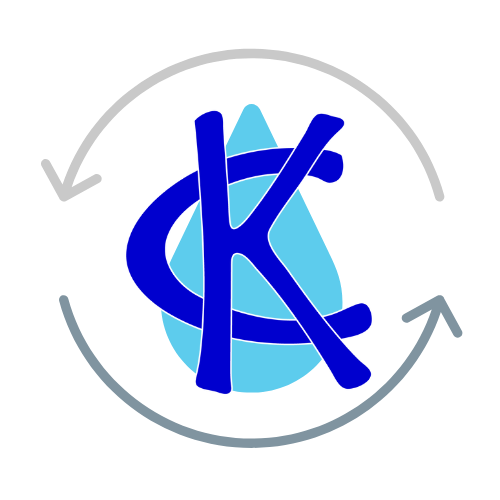Equipment
Sold Individually or as a customizable package.
Need it installed as well? Say no more!
ALL OF OUR PRODUCTS COME STANDARD WITH START-UP SERVICE OF EQUIPMENT AND OWNER TRAINING!!
Contact us for questions or help on sizing and/or requests to add us to your bid list. Make sure form has contact info questions, plumbing contractor company, name of job/project, and option to include attachments and/or link to bid site.
The Process
Removal of calcium and magnesium compounds in water (limestone hardness) eliminates scaling in piping, process equipment, and heat exchange systems as well as greatly improving the effectiveness of cleaning and rinsing processes.
Size Matters
It is essential to know the exact size of the water softener for your homes. If the water softener is too small it will frequently run out of water, reduce water pressure, require more servicing, and have a reduced service life. Too big a water softener on the other hand could lead to sanitary issues. C & K Water Specialists, LLC can help you determine the right size of water softener for your needs based on your consumption, no of simultaneous flows needed etc.
The Process
Reverse Osmosis is capable of removing up to 99%+ of the dissolved salts (ions), particles, colloids, organics, bacteria and pyrogens from the feed water. It is very effective in treating brackish, surface and ground water for both large and small flows applications.
System Operation
Reverse Osmosis works by using a high-pressure pump to increase the pressure on the salt side of the RO and force the water across the semi-permeable RO membrane. The membranes stop contaminated water, cleaning solutions and un-dissolved materials from passing through. The clean water is sent along to the point of use and the containments are discharged to a drain.
How It Works
A large number of filtration designs have been developed and are in use – slow sand, rapid sand, dual-media, deep bed dual media, deep bed mono media, multimedia, up-flow, down-flow, bi-flow, cross-flow, etc.
Activated carbon is a favored water treatment technique because of its multifunctional nature and the fact that it adds nothing detrimental to the treated water. The two principal mechanisms by which activated carbon removes contaminants from water are adsorption and catalytic reduction.
Organics are removed by adsorption and residual disinfectants are removed by catalytic reduction.
The Process
The process of removing contaminants is through catalytic reduction or adsorption. Adsorption is a process of negatively charged contaminant ions being attracted to the positively charged activated carbon.
Residual disinfectants such as chlorine and chloramines are removed by catalytic reduction, and organic compounds are removed by adsorption. Hydrogen sulfide also can be reduced by catalytic reduction.
Acidity and the temperature of the water can be important because greater acidity and lower water temperatures tend to improve the performance of activated charcoal.
How It Works
Ultraviolet disinfection of water is a purely physical, chemical-free process, and it even reduces parasites, which are extremely resistant to chemical disinfectants. UV can also be used to remove chlorine and chloramine species from water. UV disinfection does not remove dissolved organics, inorganic compounds or particles in the water
The Process
Ultraviolet or “UV” is a type of energy found in the electromagnetic spectrum lying between x-rays and visible light. The ultraviolet energy attacks the genetic core of the harmful micro-organism and rearranges the DNA/RNA preventing reproduction.
How It Works
When you need high purity water for your laboratory, manufacturing, or reef-keeping / aquarium water, a deionization system is an excellent option. Deionization requires the flow of water through two ion exchange.
The passage of water through the first exchange material removes the calcium and magnesium ions just as in the normal softening process. Deionization units also remove all other positive metallic ions in the process and replace them with hydrogen ions instead of sodium ions.
The Process
Deionization (DI) is a water filtration process whereby total dissolved solids (TDS) are removed from water through ion exchange. In simple terms, by controlling the electric charge of ions in the water, it is possible to remove the TDS.
How It Works
A condensate polisher is a device used to filter water condensed from steam as part of the steam cycle. Condensate polishers are important in systems using the boiling and condensing of water to transport or transform thermal energy.
Using technology similar to a water softener, trace amounts of minerals or other contamination are removed from the system before such contamination becomes concentrated enough to cause problems by depositing minerals inside pipes, or within precision-engineered devices.
The Process
Condensate polisher systems offer a sound solution for removing impurities such as iron, copper, and hardness from returned steam condensate resulting in improved boiler feed water quality and lower operating costs.
How It Works
The dealkalization of water refers to the removal of alkalinity ions from water. Dealkalizers are most often used as pre-treatment to a boiler and are usually preceded by a water softener.
The reduction of blowdown by dealkalization keeps the water treatment chemicals in the boiler longer, thus minimizing the amount of chemicals required for efficient, noncorrosive operation.
The Process
Dealkalizers offer an efficient alkalinity reduction solution for larger commercial and industrial applications. De-alkalization of boiler feed water reduces system blow down and helps lower energy and water costs. It also promotes a more effective boiler chemical program and reduces condensate return line corrosion.
How It Works
An automatic liquid level controller will introduce fresh water into the silo to provide for a consistent supply of saturated brine to be subsequently pumped to the water softener system.
The Process
Brinemaker Silos are the ideal complement for industrial water softening systems that require a large amount of daily salt consumption for the regeneration process. The corrosion-free design will allow for on-site truckload delivery of sodium chloride salt that is pneumatically conveyed directly into the silo.
Would you like to avail any of our services or equipment?
